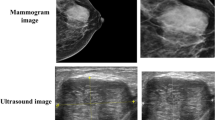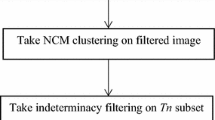Abstract
Neonatal disorder is most common in newborn babies. It is due to the unusual activity of the baby's organs. Neonatal hyperbilirubinemia is familiar among neonates. The origin of hyperbilirubinemia is the existence of yellow coloration on the baby's skin. At a severe stage, it may affect the human brain. Early prediction is essential to overcome the neonate's mortality. It is achieved by computer vision-based image preprocessing and machine learning. In the existing system, feature extraction is based on color features. To enhance the performance, multiple extractions such as structural feature extraction and pixel positioning feature extraction are essential for medical image feature extraction. In the proposed system, a feature fusion method is implemented to upgrade the performance. Developing the novel method of the feature fusion framework enhances the performance of the binary classification and helps for up-gradation. The system architecture consists of baby segmentation, feature fusion, and classification. Baby segmentation is done by the fast and robust fuzzy clustering algorithm. Feature fusion framework includes feature extraction, feature fusion, and feature selection. Feature extraction is performed by the novel method of Structural Color Gray Coherent Feature extraction to extract 35 features. The features are fused into a single feature by a concatenation operation. An improvised method of the Salp Swarm Algorithm is implemented for feature selection, and the classification is done by a random forest. The comparison analysis of various classifiers is carried out, based on their true positive, true negative, false negative, and false positive, respectively. The experimental result shows the random forest classified with a performance of 97% accuracy.












Similar content being viewed by others
Data availability
Data sharing is not applicable—no new data are generated.
References
Alken J, Stellan H (2021) Rates of extreme neonatal hyperbilirubinemia and kernicterus in children and adherence to national guidelines for screening, diagnosis, and treatment in Sweden|Guidelines|JAMA Network Open|JAMA Network.” https://jamanetwork.com/journals/jamanetworkopen/fullarticle/2728619. Accessed 25 Oct 2021
Anter AM, Bhattacharyya S, Zhang Z (2020) Multi-stage fuzzy swarm intelligence for automatic hepatic lesion segmentation from CT scans. Appl Soft Comput 96:106677
Aruna Devi B, Pallikonda Rajasekaran M (2019) Performance evaluation of MRI pancreas image classification using artificial neural network (ANN). In: Satapathy SC, Bhateja V, Das S (eds) Smart intelligent computing and applications, vol 104. Springer Singapore, Singapore, pp 671–681
Balakrishnan K, Dhanalakshmi R, Khaire UM (2021) Improved salp swarm algorithm based on the levy flight for feature selection. J Supercomput 77(11):12399–12419
Behrouzian Nejad M, Ebrahim Shiri M (2019) A new enhanced learning approach to automatic image classification based on salp swarm algorithm. Comput Syst Sci Eng 34(2):91–100. https://doi.org/10.32604/csse.2019.34.091
Bhavani RR, Wiselin Jiji G (2018) Image registration for varicose ulcer classification using KNN classifier. Int J Comput Appl 40(2):88–97. https://doi.org/10.1080/1206212X.2017.1395108
Breiman L (2001) Random forest. Mach Learn 45(1):5–32. https://doi.org/10.1023/A:1010933404324
Chen L, Bentley P, Mori K, Misawa K, Fujiwara M, Rueckert D (2018) DRINet for medical image segmentation. IEEE Trans Med Imaging 37(11):2453–2462. https://doi.org/10.1109/TMI.2018.2835303
Cheng HD, Jiang XH, Sun Y, Wang J (2001) Color image segmentation: advances and prospects. Pattern Recogn 34(12):2259–2281. https://doi.org/10.1016/S0031-3203(00)00149-7
Choubey H, Pandey A (2021) A combination of statistical parameters for the detection of epilepsy and EEG classification using ANN and KNN classifier. SIViP 15(3):475–483. https://doi.org/10.1007/s11760-020-01767-4
Chowdhury AR, Chatterjee T, Banerjee S (2019) A Random forest classifier-based approach in the detection of abnormalities in the retina. Med Biol Eng Comput 57(1):193–203. https://doi.org/10.1007/s11517-018-1878-0
Gao H, Xiao J, Yin Y, Liu T, Shi J (2022) A mutually supervised graph attention network for few-shot segmentation: the perspective of fully utilizing limited samples. IEEE Trans Neural Netw Learn Syst. https://doi.org/10.1109/TNNLS.2022.3155486
García-Floriano A, Ferreira-Santiago Á, Camacho-Nieto O, Yáñez-Márquez C (2019) A machine learning approach to medical image classification: detecting age-related macular degeneration in fundus images. Comput Electr Eng 75:218–229. https://doi.org/10.1016/j.compeleceng.2017.11.008
Hashmi MF, Anand V, Keskar AG (2014) Copy-move image forgery detection using an efficient and robust method combining un-decimated wavelet transform and scale invariant feature transform. AASRI Proc 9:84–91. https://doi.org/10.1016/j.aasri.2014.09.015
Hassan SA, Sayed MS, Abdalla MI, Rashwan MA (2019) Detection of breast cancer mass using MSER detector and features matching. Multimed Tools Appl 78(14):20239–20262. https://doi.org/10.1007/s11042-019-7358-1
Hegazy AE, Makhlouf MA, El-Tawel GS (2020) Improved salp swarm algorithm for feature selection. J King Saud Univ Comput Inf Sci 32(3):335–344. https://doi.org/10.1016/j.jksuci.2018.06.003
Huang Q, Huang Y, Luo Y, Yuan F, Li X (2020) “Segmentation of breast ultrasound image with semantic classification of superpixels. Med Image Anal 61:101657. https://doi.org/10.1016/j.media.2020.101657
Ibrahim RA, Ewees AA, Oliva D, Abd Elaziz M, Lu S (2019a) Improved salp swarm algorithm based on particle swarm optimization for feature selection. J Ambient Intell Human Comput 10(8):3155–3169. https://doi.org/10.1007/s12652-018-1031-9
Ibrahim RA, Ewees AA, Oliva D, Abd Elaziz M, Lu S (2019b) Improved salp swarm algorithm based on particle swarm optimization for feature selection. J Ambient Intell Humaniz Comput 10(8):3155–3169
Ibrahim A, Mohammed S, Ali HA, Hussein SE (2020) Breast cancer segmentation from thermal images based on chaotic salp swarm algorithm. IEEE Access 8:122121–122134. https://doi.org/10.1109/ACCESS.2020.3007336
Ibrahim MH, A salp swarm-based under-sampling approach for medical imbalanced data classification. Avrupa Bilim ve Teknoloji Dergisi 34: 396–402
Kaplan K, Kaya Y, Kuncan M, Ertunç HM (2020) Brain tumor classification using modified local binary patterns (LBP) feature extraction methods. Med Hypotheses 139:109696. https://doi.org/10.1016/j.mehy.2020.109696
Kavitha JC, Suruliandi A, Nagarajan D (2017) Melanoma detection in dermoscopic images using global and local feature extraction. IJMUE 12(5):19–28. https://doi.org/10.14257/ijmue.2017.12.5.02
Lei T, Jia X, Zhang Y, He L, Meng H, Nandi AK (2018) Significantly fast and robust fuzzy C-means clustering algorithm based on morphological reconstruction and membership filtering. IEEE Trans Fuzzy Syst 26(5):3027–3041. https://doi.org/10.1109/TFUZZ.2018.2796074
Masetic Z, Subasi A (2016) Congestive heart failure detection using random forest classifier. Comput Methods Programs Biomed 130:54–64. https://doi.org/10.1016/j.cmpb.2016.03.020
Mirjalili S, Gandomi AH, Mirjalili SZ, Saremi S, Faris H, Mirjalili SM (2017) Salp swarm algorithm: a bio-inspired optimizer for engineering design problems. Adv Eng Softw 114:163–191. https://doi.org/10.1016/j.advengsoft.2017.07.002
Mohanty F, Rup S, Dash B, Majhi B, Swamy MNS (2020) An improved scheme for digital mammogram classification using weighted chaotic salp swarm algorithm-based kernel extreme learning machine. Appl Soft Comput 91:106266. https://doi.org/10.1016/j.asoc.2020.106266
Nida N, Irtaza A, Javed A, Yousaf MH, Mahmood MT (2019) Melanoma lesion detection and segmentation using deep region based convolutional neural network and fuzzy C-means clustering. Int J Med Inform 124:37–48. https://doi.org/10.1016/j.ijmedinf.2019.01.005
Rinky BP, Mondal P, Manikantan K, Ramachandran S (2012) DWT based feature extraction using edge tracked scale normalization for enhanced face recognition. Proc Technol 6:344–353
Routray S, Ray AK, Mishra C (2017) Analysis of various image feature extraction methods against noisy image: SIFT, SURF and HOG. In: 2017 second international conference on electrical, computer and communication technologies (ICECCT), Coimbatore, pp 1–5. https://doi.org/10.1109/ICECCT.2017.8117846
Shoba VBT, Sam IS (2020) A hybrid features extraction on face for efficient face recognition. Multimed Tools Appl 79(31–32):22595–22616. https://doi.org/10.1007/s11042-020-08997-1
Sugimoto K, Kyochi S, Kamata SI (2018) Universal approach for dct-based constant-time gaussian filter with moment preservation. In: 2018 IEEE international conference on acoustics, speech and signal processing (ICASSP), pp 1498–1502. IEEE
Sun G (2017) Cervical cancer diagnosis based on random forest. IJPE. https://doi.org/10.23940/ijpe.17.04.p12.446457
Wang J, Yang Y, Mao J, Huang Z, Huang C, Xu W (2016) CNN-RNN: a unified framework for multi-label image classification. In: 2016 IEEE conference on computer vision and pattern recognition (CVPR), Las Vegas, NV, USA, pp 2285–2294. https://doi.org/10.1109/CVPR.2016.251
Xiao J, Xu H, Gao H, Bian M, Li Y (2021) A weakly-supervised semantic segmentation network by aggregating seed cues: the multi-object proposal generation perspective. ACM Trans Multimed Comput Commun Appl 17(1s):1–19
Zaw HT, Maneerat N, Win KY (2019) Brain tumor detection based on Naïve Bayes Classification. In: 2019 5th international conference on engineering, applied sciences and technology (ICEAST), Luang Prabang, Laos, pp 1–4. https://doi.org/10.1109/ICEAST.2019.8802562
Zhang X, Sun Y, Jiang K, Li C, Jiao L, Zhou H (2018) Spatial sequential recurrent neural network for hyperspectral image classification. IEEE J Sel Top Appl Earth Observ Remote Sens 11(11):4141–4155. https://doi.org/10.1109/JSTARS.2018.2844873
Funding
No funding was received to assist with the preparation of this manuscript.
Author information
Authors and Affiliations
Corresponding author
Ethics declarations
Conflict of interest
The authors declare that they have no conflict of interest.
Ethical approval
This article does not contain any studies with human participants or animals performed by any of the authors.
Additional information
Publisher's Note
Springer Nature remains neutral with regard to jurisdictional claims in published maps and institutional affiliations.
Rights and permissions
Springer Nature or its licensor (e.g. a society or other partner) holds exclusive rights to this article under a publishing agreement with the author(s) or other rightsholder(s); author self-archiving of the accepted manuscript version of this article is solely governed by the terms of such publishing agreement and applicable law.
About this article
Cite this article
Nayagi, S.B., Angel, T.S.S. An enhanced method of feature fusion techniques to diagnosis neonatal hyperbilirubinemia. Soft Comput 27, 10961–10974 (2023). https://doi.org/10.1007/s00500-023-08565-3
Accepted:
Published:
Issue Date:
DOI: https://doi.org/10.1007/s00500-023-08565-3




